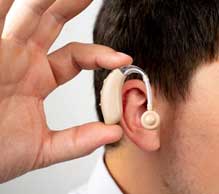What are they?
Communication disorders can occur during language acquisition in childhood or later when illness, injury or stroke damages language areas of the brain. They range widely in severity, from simple sound substitutions to an inability to understand or use language at all. Treatment varies based on the type and severity of the disorder.
Types of communication disorders
Here are some examples of communication disorders:
Speech Sound Disorders
Fluency Disorders
Voice Disorders
Aphasia
Dysarthria
Auditory Processing Disorders
Autism Spectrum Disorders
Selective Mutism
Consistent failure to speak in certain social situations despite
Treatment for communication disorders
Treatment is tailored to each person’s specific communication disorder and challenges. Some examples include:

Speech Therapy
Exercises focus on speech, language, strengthening oral muscles, and learning communication strategies.

Augmentative Communication
Using communication boards, sign language, text-to-speech apps, and other tools to aid expression.

Hearing Aids and Implants
Devices that amplify sound and help process speech.

Medications
Drugs that affect neurotransmitters, muscles, or neural pathways involved in communication.

Surgery
For some cancers or neurological conditions affecting speech areas of the brain.

Behavioral Techniques
Modifying communication environments and using positive reinforcements.
